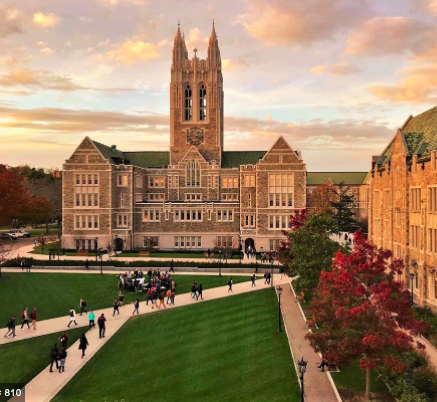Welcome to our special section, Thrive on Campus, devoted to covering the urgent issue of mental health among college and university students from all angles. If you are a college student, we invite you to apply to be an Editor-at-Large, or to simply contribute (please tag your pieces ThriveOnCampus). We welcome faculty, clinicians, and graduates to contribute as well. Read more here.
Nationwide, research claims 1 out of 100 college students have attempted suicide during their college career. At my college, four students have died in the past four months, though none of them died on the college campus. College mental health issues are becoming a nationwide issue. Every day, I see friends struggling on campus. They can encounter stresses such as a campus atmosphere of high academic achievement, emphasis on body image, FOMO, drinking culture, hidden loneliness, and the perceived racial trauma on this predominantly white community, etc. With this much pressure, counseling resources meeting students’ needs is a huge challenge.
Objectively speaking, B.C. has a pretty good counseling resource — great staff to student ratio, emphasis on diverse counselor body and diversity and inclusion, offering same-day consultation, a large campus ministry, an accessible counseling center location, etc. Subjectively speaking, I see the staff working wholeheartedly, meeting students with humanity and respect, and providing high-quality care.
However, I also see institutional and systemic issues that cause a barrier to mental health resources. On campus, issues such as perceived culture stigma, long wait times (not as bad as some other colleges, though), mistrust toward the resource, the disconnect between in-patient care and campus care, fear of the mandated LOA policy, and limited off-campus practitioner availability are all factors that cause barriers to mental health resources. Even when students seek off-campus community resources, they are often met with huge challenges, such as no returned calls, a lack of availability, limited insurance coverage, lack of culture-competent practitioners, etc. Researchers attempted to make an appointment with outpatient providers around the Boston area had found only an 18% success rate after they initiate the call.

From my personal experience, I admire B.C.’s commitment to supporting students with on-campus resources, rather than mandating students in distress to go on a ‘Leave of Absence’ at an as high rate as some other elite universities (AUCCCD survey statistics, including LOA). Still, I remember all the challenges I encountered in my freshman year. Issues such as mistrust toward the helping profession, family stigma, trouble booking an appointment, limited counseling availability, a frightening experience being Sectioned (involuntary hospitalization), perceived threats of re-entry assessment and mandated LOA policy, difficulties connecting with community practitioners when being referred off-campus, which all caused barriers in accessing help. After the initial feeling of confusion, shock, loneliness, and several crises, I eventually got connected with some amazing people and resources on campus, such as the Dean of Students’ Office, Campus Ministry, the Counseling Service, etc. While I’m fortunate and blessed enough to receive an excellent follow-up, some of my friends feel lost navigating through this complicated system.
Looking back, the miscommunication and trouble connecting with the right mental health resources on campus led me to several crises that could’ve been avoided. However, I wouldn’t have made it through my freshman year if it weren’t the support from all the great clinicians and university staff I eventually connected with. Having this mixed experience and seeing many other students struggle alone makes me wonder, how do we make sure those in need can successfully access the right resources?
From prevention, intervention, to postvention, a comprehensive system is needed to effectively reach students and address mental health needs. Prevention wise, providing outreach to families on FYE, educating professors and staff, increasing peer-support (e.g. health coach or peer text service), opening a dialogue through student initiatives (e.g. Open-Mic event), and offering prevention and education groups, all help increase student resilience and encourage support-seeking behavior. Intervention wise, to shorten the counseling service wait time, emphasize cultural-competence in service, adopt an effective triage model, and focus therapy groups on specific concerns, can all help increase accessibility and ensure the quality of care. Postvention wise, ensuring continued follow-up, providing adequate referrals, maintaining clear communication with different parties (e.g. hospital), and clarifying laws regarding students’ rights (e.g. FERPA and HIPAA), are essential to connect those most in need with the necessary resources.
It seems like B.C. is tackling the issue through these various aspects. As students, we also have a huge role in participating in and improving the institution. We might not know the reason behind these deaths, but we share the grief and remembrance of these precious souls. When we look around and see many students who are suffering, we shall ask ourselves, what can we do to prevent losing another beloved friend? How can we best support one another in this community?
*Article modified on Sep. 10th, 2019
Subscribe here for all the latest news on how you can keep Thriving.
More Thrive Global on Campus:
What Campus Mental Health Centers Are Doing to Keep Up With Student Need
If You’re a Student Who’s Struggling With Mental Health, These 7 Tips Will Help
The Hidden Stress of RAs in the Student Mental Health Crisis

